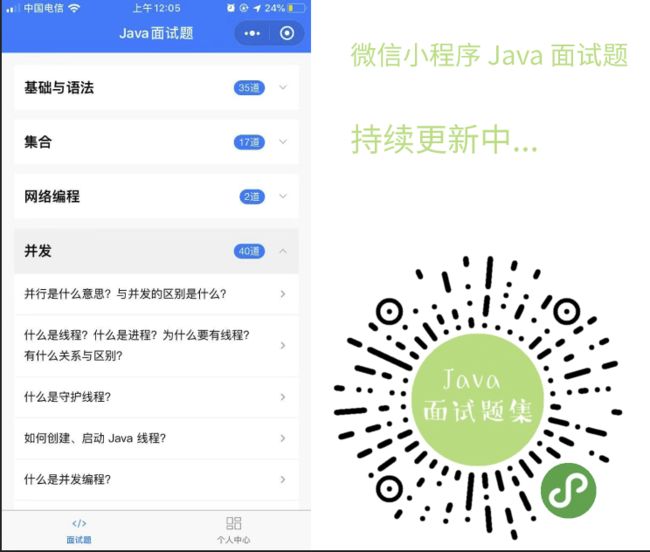spring 自动装配 bean 有哪些方式?
spring 自动装配 bean 有哪些方式?
spring 配置文件中
- default - 默认的方式和 "no" 方式一样
- no - 不自动装配,需要使用 节点或参数
- byName - 根据名称进行装配
- byType - 根据类型进行装配
- constructor - 根据构造函数进行装配
文档解释
Attribute : autowire
Controls whether bean properties are "autowired". This is an
automagical process in which bean references don't need to
be coded explicitly in the XML bean definition file, but rather
the Spring container works out dependencies. The effective
default is "no". There are 4 modes: 1. "no" The traditional
Spring default. No automagical wiring. Bean references must
be defined in the XML file via the element (or "ref"
attribute). We recommend this in most cases as it makes
documentation more explicit. Note that this default mode also
allows for annotation-driven autowiring, if activated. "no"
refers to externally driven autowiring only, not affecting any
autowiring demands that the bean class itself expresses. 2.
"byName" Autowiring by property name. If a bean of class Cat
exposes a "dog" property, Spring will try to set this to the
value of the bean "dog" in the current container. If there is no
matching bean by name, nothing special happens. 3. "byType"
Autowiring if there is exactly one bean of the property type in
the container. If there is more than one, a fatal error is raised,
and you cannot use byType autowiring for that bean. If there is
none, nothing special happens. 4. "constructor" Analogous to
"byType" for constructor arguments. If there is not exactly one
bean of the constructor argument type in the bean factory, a
fatal error is raised. Note that explicit dependencies, i.e.
"property" and "constructor-arg" elements, always override
autowiring. Note: This attribute will not be inherited by child
bean definitions. Hence, it needs to be specified per concrete
bean definition. It can be shared through the 'default-autowire'
attribute at the 'beans' level and potentially inherited from
outer 'beans' defaults in case of nested 'beans' sections (e.g.
with different profiles).
Data Type : string
Default Value : default
Enumerated Values :
- default
- no
- byName
- byType
- constructor
代码示例
1、no 方式
spring 配置文件,使用 ref 参数注入 bean,必须要有对象的 setter 方法,这里即 Person 的 setFr 方法。
没有
鱼竿 bean
package constxiong.interview.assemble;
/**
* 鱼竿
* @author ConstXiong
* @date 2019-07-17 09:53:15
*/
public class FishingRod {
/**
* 被使用
*/
public void used() {
System.out.println("钓鱼...");
}
}
人 bean
package constxiong.interview.assemble;
/**
* 人
* @author ConstXiong
* @date 2019-07-17 09:54:56
*/
public class Person {
private FishingRod fr;
/**
* 钓鱼
*/
public void fish() {
fr.used();
}
public void setFr(FishingRod fr) {
this.fr = fr;
}
}
测试代码
package constxiong.interview.assemble;
import org.springframework.context.ApplicationContext;
import org.springframework.context.support.ClassPathXmlApplicationContext;
public class AssembleTest {
public static void main(String[] args) {
ApplicationContext context = new ClassPathXmlApplicationContext("spring_assemble.xml");
Person person = (Person)context.getBean("person");
person.fish();
}
}
2、byName 也是需要相应的 setter 方法才能注入
修改 spring 配置文件 autowire="byName"
其他不变
3、byType 也是需要相应的 setter 方法才能注入
修改 spring 配置文件 autowire="byType"
其他不变
4、constructor 无需 setter 方法,需要通过 构造方法注入 bean
修改 spring 配置文件autowire="byType"
Person 类去除 setFr 方法,添加构造方法设置 fr 属性
package constxiong.interview.assemble;
/**
* 人
* @author ConstXiong
* @date 2019-07-17 09:54:56
*/
public class Person {
private FishingRod fr;
public Person(FishingRod fr) {
this.fr = fr;
}
/**
* 钓鱼
*/
public void fish() {
fr.used();
}
}
1、2、3、4 的测试结果一致,打印
钓鱼...
专栏:
-
自做 Java 面试题
-
重学 Java 并发编程
写了微信小程序汇总Java 面试题
每天持续更新中.......
